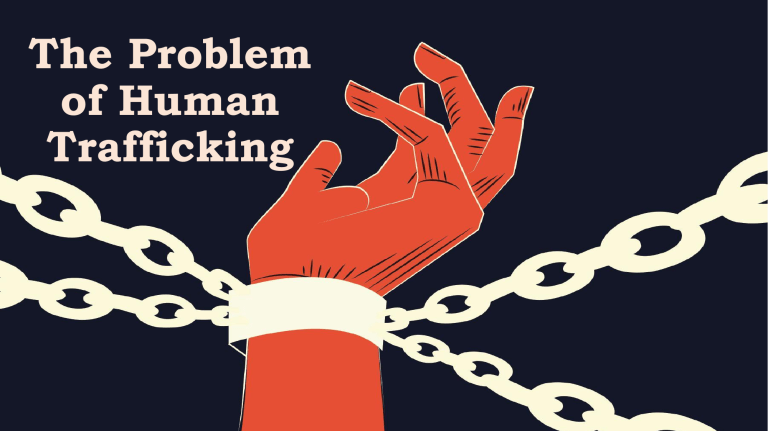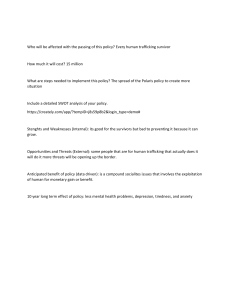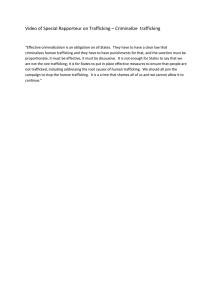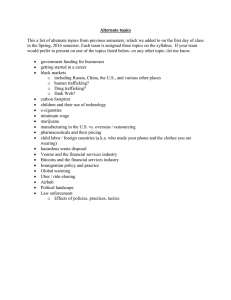
The Problem of Human Trafficking What is Human Trafficking? • Human trafficking is the trapping and exploitation of a person using deception, violence, or coercion. It generally takes three main forms: forced labor (which includes sex trafficking), forced marriage, forced organ removal, and state-imposed forced labor. Human Trafficking? • The United States Federal Bureau of Investigation list human trafficking as the third largest criminal activity worldwide • In 2012, the International Labor Organization(ILO) identified 21 million men, women, and children as victims of “forced labor”, an appalling three out every 1,000 persons worldwide. 90% of the victims are exploited by private enterprises and entrepreneur; 22% (4.5 million) are sexually abused; and 68 % (14.2 million) work under compulsion in agricultural, manufacturing, infrastructure, and • domestic activities. Who are the Victims of Human Trafficking? • 49% of Women and 23% of girls make up the majority of all reported human trafficking cases, including 99% of victims of sex trafficking and 58% of victims in all other commercial industries. • 21% of Men and 7% of boys also constitute a significant share of human trafficking victims, including the majority of those trafficked in male-dominated industries such as agriculture, construction, and manufacturing. Men and boys also make up the majority of victims of organ removal. • Migrants are particularly vulnerable to human trafficking, especially forced labor, in which they represent almost one in every four victims. Where does Human Trafficking takes place? • Approximately 40 percent of human trafficking victims work in the private sector, many linked to the supply chains of international businesses. • Industries in which trafficking is common include agriculture, fishing, domestic work, sex work, construction, mining, manufacturing, and processing and packaging. Where does Human Trafficking takes place? • Just as the world is an incredibly diverse place, human trafficking follows different patterns in different regions. Africa has the world’s highest detected rate of forced marriage. Meanwhile, forced criminality (cases in which traffickers force victims to commit crimes) is mainly reported in Western and Southern Europe. The AsiaPacific region accounts for two-thirds of all forced labor, whereas the Americas account for just 5 percent. Thank You for Listening





